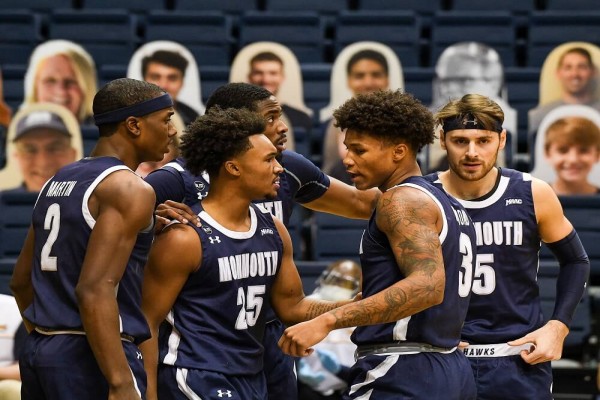Monmouth’s Departure Forces MAAC into Expansion/No Expansion Decision
National Notebook : Monmouth’s Departure Forces MAAC into Expansion/No Expansion Decision

To expand, or not to expand. That is the question facing the mid-major Metro Atlantic Athletic Conference after news surfaced this week that Monmouth University will depart the league.
According to multiple media outlets, Monmouth will leave the MAAC and accept an invitation to join the Colonia Athletic Association in time for the 2022-23 season. Monmouth had been a part of the MAAC for nine years since jumping from the Northeast Conference.
MAAC Commissioner Rich Ensor expected realignment to trickle down to his league, noting that “We’re not immune from the realignment that is occurring nationwide,” Ensor said during the league’s weekly conference call.
Ensor finds himself in an interesting quandary. Monmouth’s departure drops the MAAC from 11 teams to 10. Ideally, the commissioner would like to replace Monmouth as well as add one more school to bring the MAAC to 12 teams.
But Ensor faces two issues. One, of course, is who would the MAAC invite in what is generally considered a small pool of potential candidates. And the other is, his two most high-profile coaches both question whether expansion is even needed – or, if Ensor gets his wish to bring the league to an even dozen, would the new schools bring credibility to the table?
“Losing a program like Monmouth is difficult for us so we have to replace them with somebody as good as Monmouth.” Iona coach Rick Pitino said on the weekly call. “I don’t care if it’s 11, 12, 14, whatever the number (of teams) is. If you’re not taking quality, quantity is only going to hurt the MAAC.”
Manhattan’s Steve Masiello, a former Pitino assistant at Louisville, agreed with his old boss.
“I think if you’re going to go with 11 teams, it’s really important who you bring in. At the end of the day, I have no feeling towards what we do, I care about what it leads to,” Masiello said. “And what I mean by that is, how do we get multiple teams in (the NCAA Tournament) and how do we raise the profile of our league and play on national TV? I’d like to see a team brought in that raises your profile. A perennial winner maybe in another league or one that has been to multiple NCAAs or has national attention. Bringing someone in just to fill a spot might (not) be best for the league.”
Ensor again reiterated that he would like to get to 12, saying that he and MAAC leadership had been discussing realignment long before news of Monmouth’s departure became public.
Who those programs might be remains the mystery.
Speculation has centered on a handful of schools, starting with Fordham. It certainly would be a natural, returning the Rams to the MAAC – Fordham was a league member from 1981-90 – and giving the conference another team in the New York City market and another natural rival for Iona and Manhattan.
The problem is, Fordham isn’t exactly the Pitino definition of quality over quantity. The program has had nine coaches since Tom Penders left in 1986, none of them with a winning record, and has made just one postseason appearance since 1992 – the 2016 CollegeInsider.com Tournament in a one-and-done performance. It’s also unlikely that, despite decades of mediocrity, Fordham would leave the Atlantic-10 in what wouldn’t even be considered a lateral move back to the MAAC.
More likely, the MAAC will again look to the Northeast Conference. The MAAC has had success with that strategy, luring Monmouth and Quinnipiac from the NEC in 2013. This time, the speculation centers on Bryant and Wagner as potential MAAC candidates.
“It’s an ongoing process and it’s safe to say we’ve been paying attention to the developments in the country and have prepared to move forward depending on what happens in the near future,” Ensor said of expansion.



